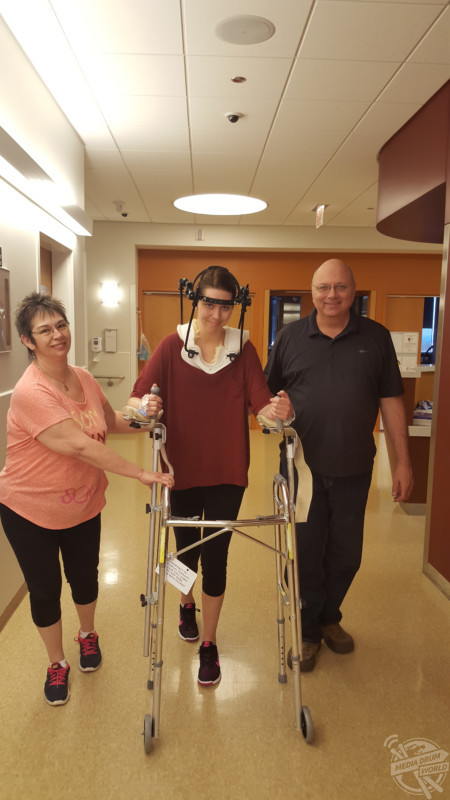
By Alyce Collins
THIS WOMAN was told by doctors that her inability to walk was all in her head until she was eventually taken seriously and had to undergo thirty-four operations to stabilise her joints.
Megan King (28) from Illinois, USA, has dealt with spinal complications for the last seven years of her life, but it wasn’t until she met with her geneticist in September 2015 that she was diagnosed with Ehlers-Danlos Syndrome (EDS). It took until seeing her tenth neck doctor to diagnose her spinal problems.
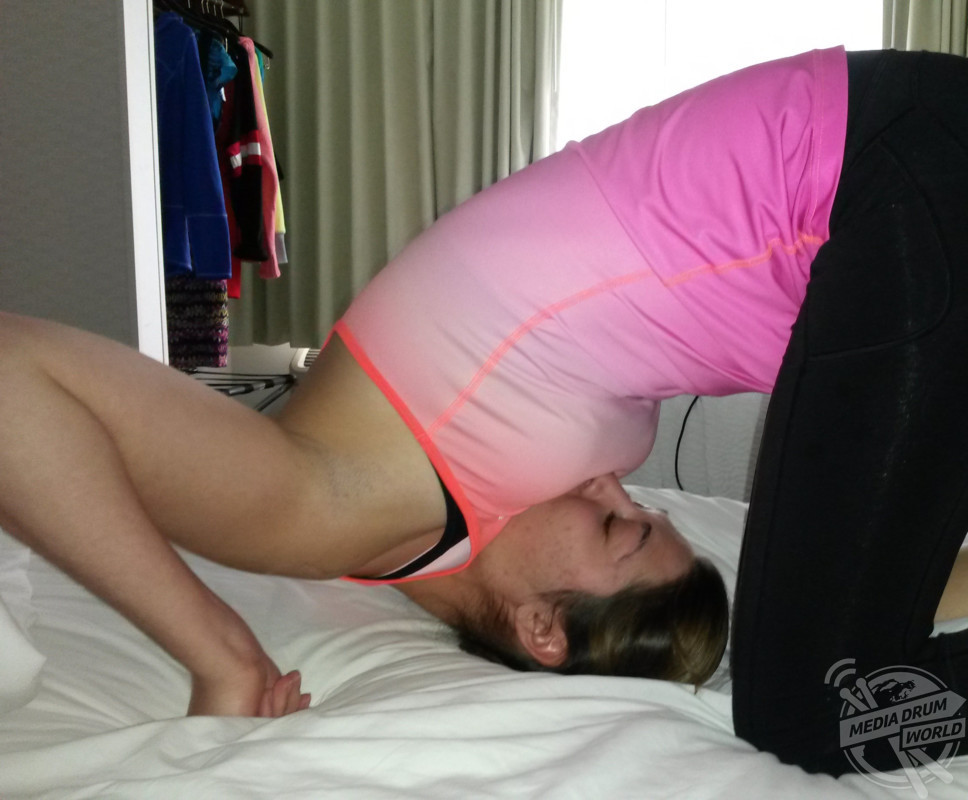
Megan King / mediadrumworld.com
EDS is a tissue disorder producing weak or faulty collagen, meaning the tissue can’t be connected or held together appropriately. Without collagen acting correctly, the body’s joints aren’t as stable as hoped.
Megan has undergone seven surgeries on her spine and skull, having a halo brace screwed into her skull in April 2016 which was held in place by two screws into her forehead, and another two above her ears. In total, she has had to have thirty-four surgeries to stabilise her joints. Of her many surgeries, Megan’s longest one took an astounding 16-hours, to operate on the C5-L2 regions of her spine.
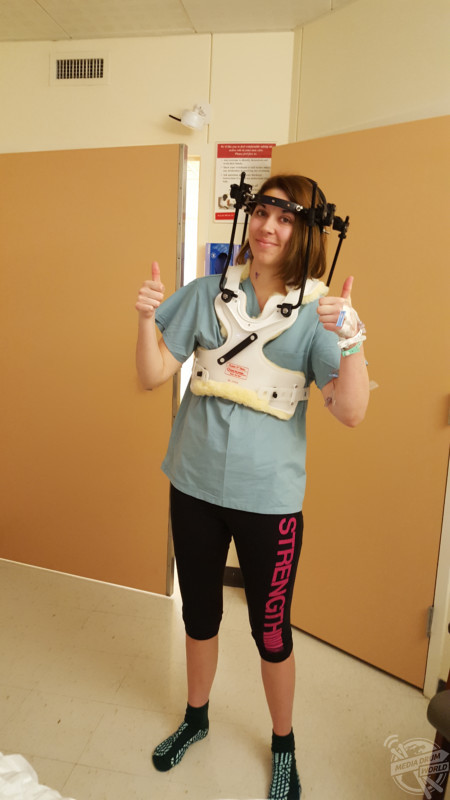
Megan King / mediadrumworld.com
“My presentation of symptoms was atypical, there were so many doctors who repeatedly told me my symptoms were psychosomatic, that there’s nothing wrong with me,” said Megan.
“It was a mental battle because deep down I knew there was a serious problem due to the pain and symptoms. I had to continually fight to find a doctor to listen and take me seriously.
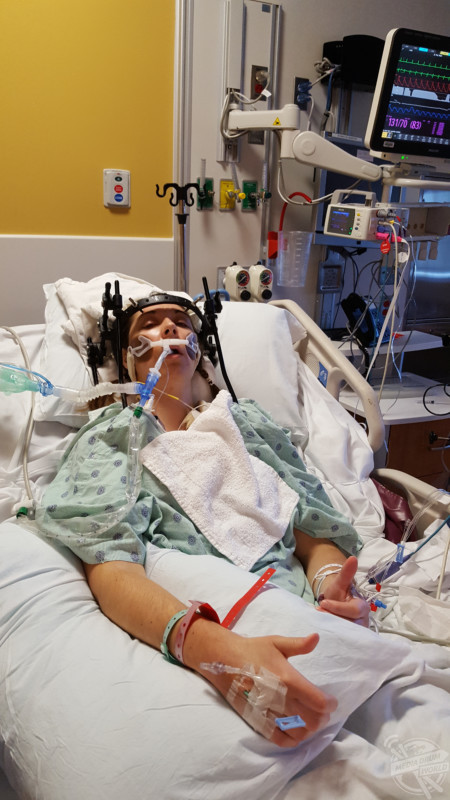
Megan King / mediadrumworld.com
“I’ve had five spinal fusions and two halo brace applications to stabilise my spine, but unfortunately my spine isn’t fusing the way it should and I have mobility where it shouldn’t, and my rods are bending. They need to straighten me out again.
“My first neck brace was ordered in November 2014, and I wore it on and off until March 2016. I didn’t wear it full time because I didn’t want my muscles to weaken further so I wore it mostly in the car and when I slept.
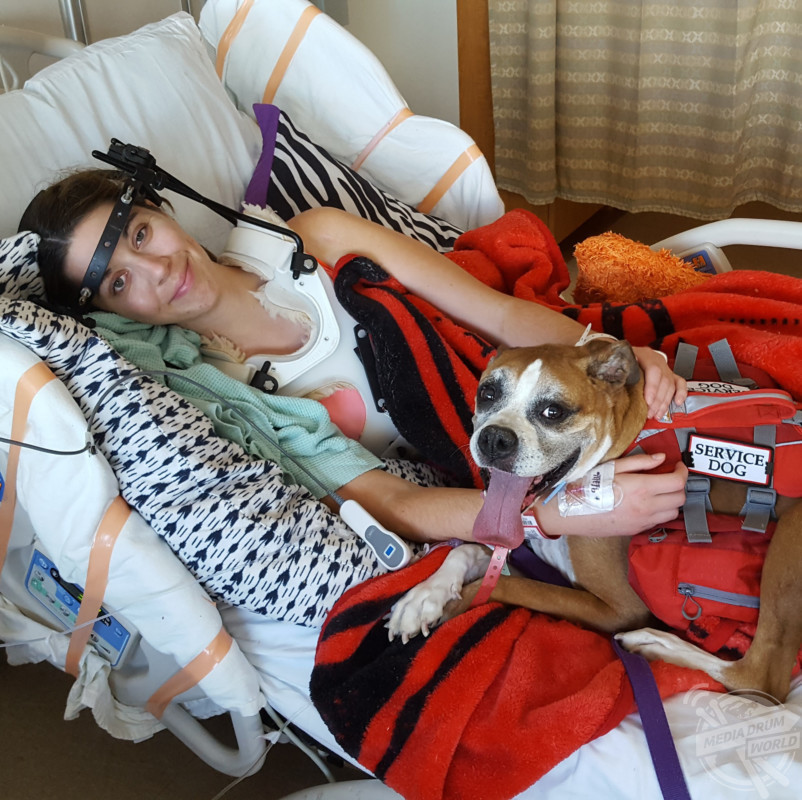
Megan King / mediadrumworld.com
“In April 2016 they fitted my halo brace which I wore for eight months constantly, until it was removed in December 2016. In February 2017 I developed instability and scoliosis below my fusion despite wearing a different brace once the halo was removed.
“To this day, I’m still in a neck brace but I can take it off more. I have to wear it in the car, physical therapy, when I’m out and when I’m sleeping.
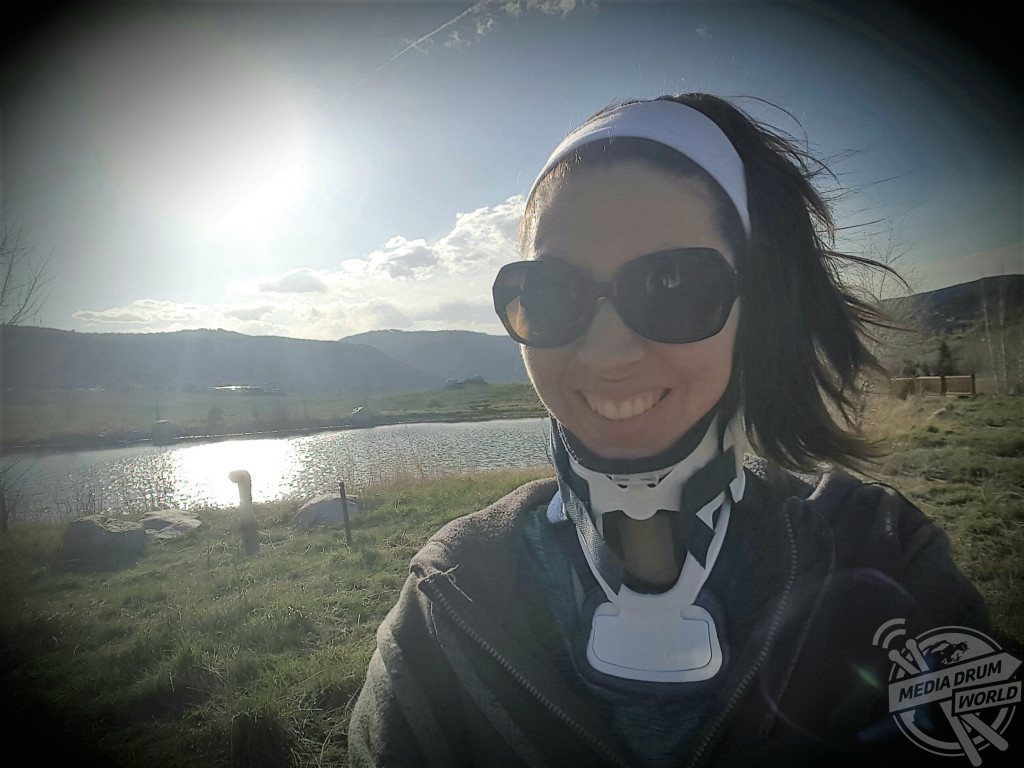
Megan King / mediadrumworld.com
“The surgeries have stabilised my spine, they helped with several of the debilitating neurological symptoms like headaches, dizziness and ringing in the ears. The surgeries have also significantly limited my mobility because I’m fused from the back of my skull to low back.
“But after the surgeries I have lost further independence, I’ll never be able to drive due to my spine and shoulders, and I don’t have the ability to move my head, neck, middle back and part of my lower back.
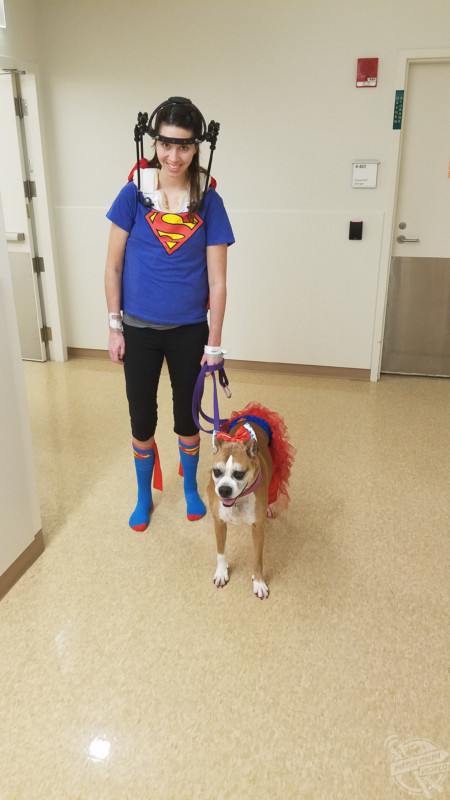
Megan King / mediadrumworld.com
“My shoulders and shoulder blades are really unstable, they were stabilised, but the work had to be undone in order to fuse my spine. It impacts recovery from spinal surgery because you have to push off with your arms to get up.
“After each surgery you have to relearn your centre of balance, walking, going up stairs and daily tasks without moving your spine – having a spine that is almost completely fused is a completely new way of life.”
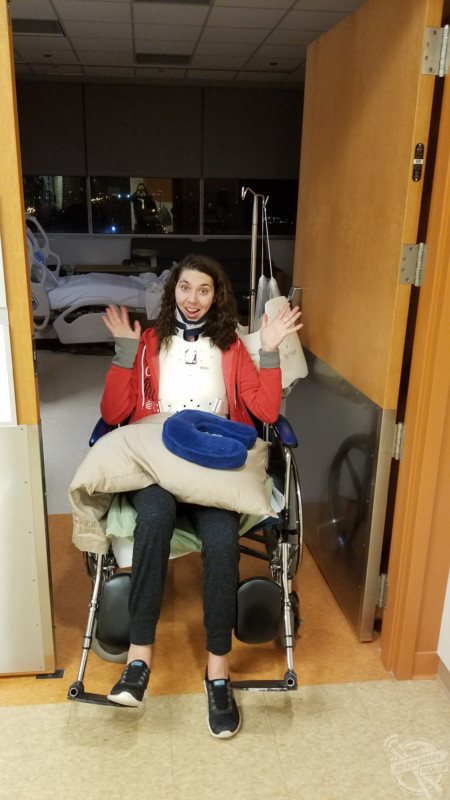
Megan King / mediadrumworld.com
Megan isn’t free of surgery yet and will have to undergo further spinal stabilisation and correction. However, with such a positive outlook when dealing with recovery and a life turned upside down, Megan has managed to inspire so many others going through similar circumstances by showing her undeniable strength by blogging about her experiences.
“I just want to help so that people know they’re not alone even if they’re dealing with different circumstances,” she said.
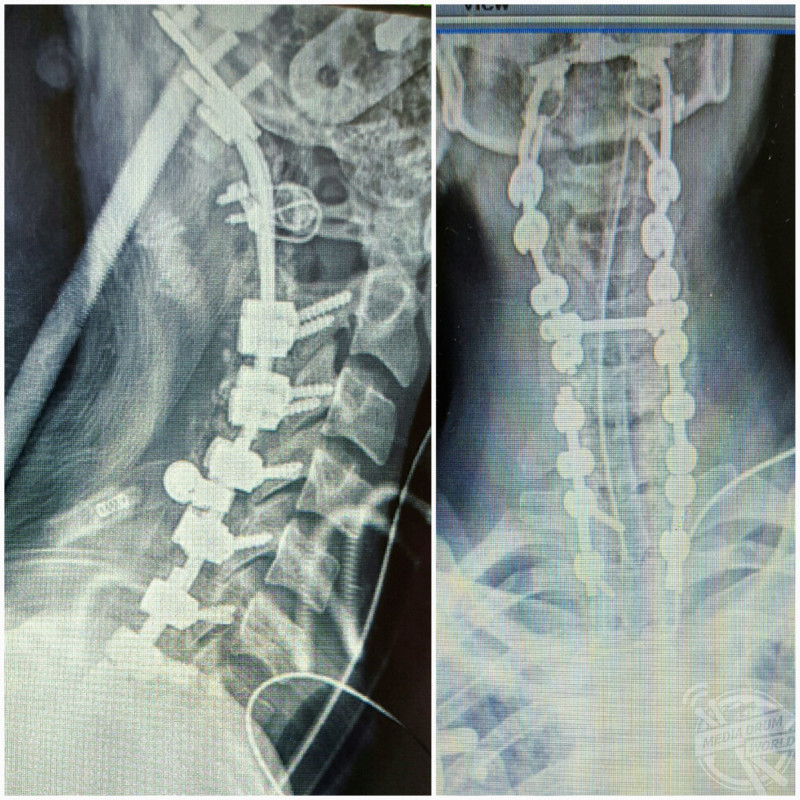
Megan King / mediadrumworld.com
“You have to listen to your gut when deep down you know there is something very wrong. You have to stay strong if you hear hurtful comments.
“Do your research so you have a better understanding of what’s going on with your body and communicate with others who may be going through something similar. Once you find a doctor, cherish them and don’t take them for granted.
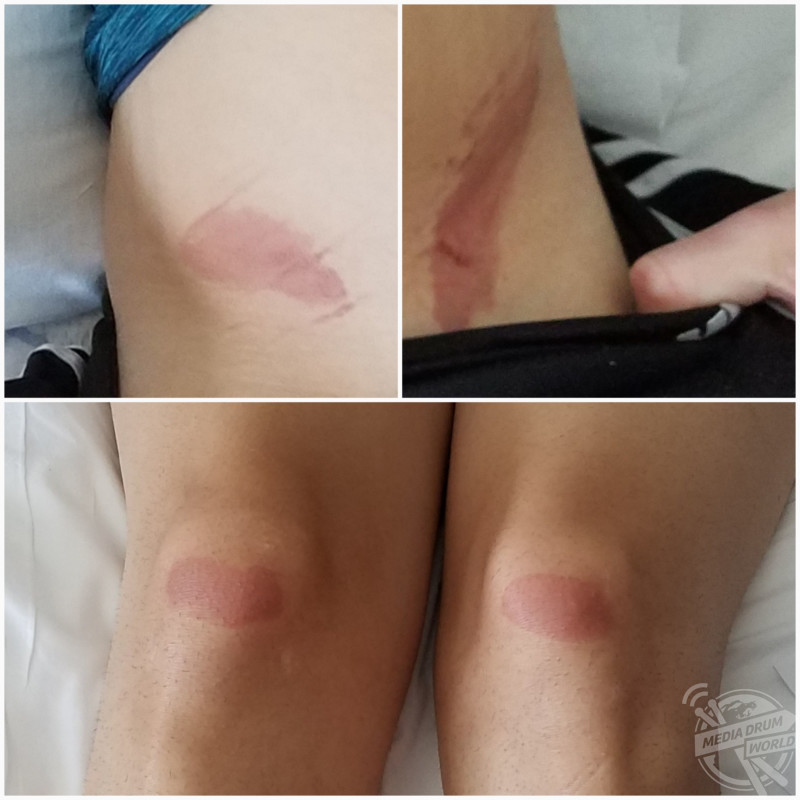
Megan King / mediadrumworld.com
“I feel like my scars represent certain chapters in my life. I wouldn’t choose them but since they’re here to stay I will love them because they’re a part of me – I call them my ‘battle wounds’.”

Megan King / mediadrumworld.com
Despite not being able to lead a normal lifestyle for her age, Megan has still managed to complete two associate degrees and hopes to complete her bachelor’s degree after further surgery.
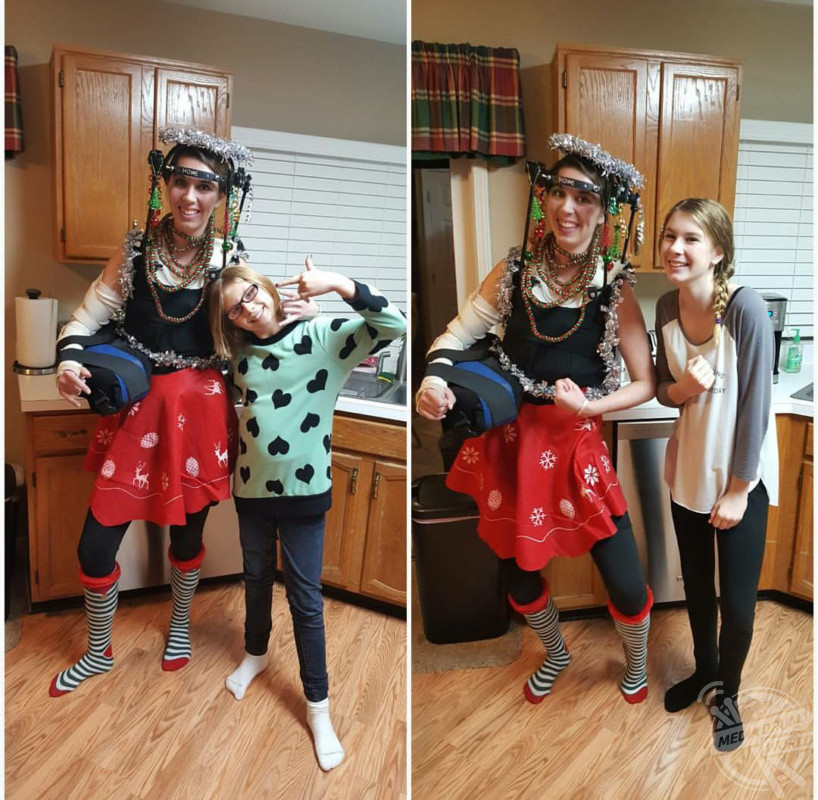
Megan King / mediadrumworld.com
If you want to find out more, go to @thetravellinghaloofhope to read more about Megan’s EDS journey.
For more information see www.mediadrumworld.com






